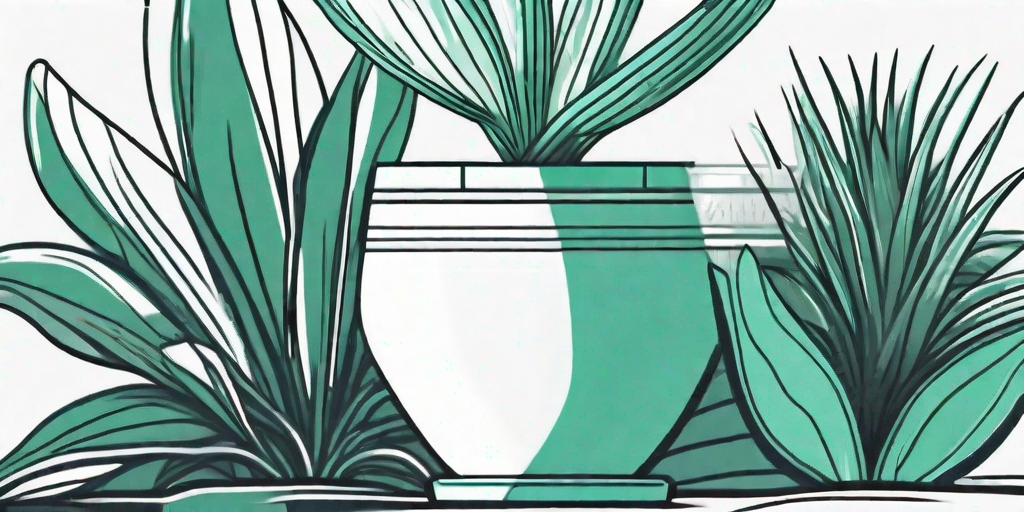
Welcome, fellow plant enthusiasts, or should I say, plant survivalists. If you're here, it's likely because you've been known to unintentionally send a few plants to the great greenhouse in the sky. Don't worry, we've all been there. But fear not, for there is a plant that can withstand even the most forgetful of gardeners, the Cast Iron Plant. This plant is as tough as its name suggests, and it's about to become your new best friend.
The Cast Iron Plant: A Brief Introduction
Also known as Aspidistra Elatior, the Cast Iron Plant hails from the dark understorey of the forests of Japan and Taiwan. It's a hardy perennial that can withstand a wide range of conditions, hence its name. But don't let its resilience fool you, this plant is not just about survival, it's also quite the looker.
With its glossy, dark green leaves that can grow up to 24 inches long, the Cast Iron Plant can add a touch of elegance to any room. It's like the plant equivalent of that friend who can go camping without a tent, and still look like they stepped out of a fashion magazine.
The Cast Iron Plant: A Survival Guide
Lighting Conditions
One of the reasons the Cast Iron Plant is so hardy is because it's used to growing in the shadows of larger plants. This means it can tolerate low light conditions, making it perfect for those dimly lit rooms where other plants fear to tread. However, it's not a fan of direct sunlight, so keep it away from south-facing windows unless you want to see it throw a plant tantrum.
And by plant tantrum, we mean it will start to lose its vibrant green color and the leaves might start to curl. It's not pretty. So, remember, indirect light is your Cast Iron Plant's best friend.
Watering
When it comes to watering, the Cast Iron Plant is a bit of a camel. It can withstand periods of drought, which is great news for those of us who sometimes forget that plants need water to survive. However, it doesn't like to have its roots sitting in water, so make sure your pot has good drainage.
A good rule of thumb is to let the top inch of soil dry out before watering again. And remember, it's better to underwater than overwater. Your Cast Iron Plant will thank you for it.
Temperature and Humidity
The Cast Iron Plant is not picky about temperature. It can survive in temperatures as low as 45 degrees Fahrenheit and as high as 85 degrees. However, it does prefer a more moderate climate, so try to keep your home between 60 and 75 degrees for a happy plant.
As for humidity, the Cast Iron Plant is not a diva. It can handle dry air, but it does appreciate a bit of moisture. So, if you live in a dry climate, consider placing a tray of water near your plant or misting it occasionally.
Common Problems and How to Solve Them
Brown Tips
If the tips of your Cast Iron Plant's leaves are turning brown, it might be a sign that it's not getting enough water. Try increasing your watering frequency and see if that helps. If not, your plant might be getting too much light. Remember, this plant likes to chill in the shade.
Yellow Leaves
Yellow leaves can be a sign of overwatering. If you notice this, cut back on the water and make sure your pot has good drainage. If the problem persists, it might be a sign of a nutrient deficiency. In this case, a good houseplant fertilizer should do the trick.
FAQs
- Is the Cast Iron Plant toxic to pets?
No, the Cast Iron Plant is safe for both cats and dogs. However, it's always a good idea to keep plants out of reach of curious pets. - How often should I fertilize my Cast Iron Plant?
Generally, you should fertilize your plant once a month during the growing season (spring and summer). Use a balanced houseplant fertilizer and follow the instructions on the package. - Can I propagate my Cast Iron Plant?
Yes, you can propagate your plant by division. Simply divide the plant at the roots and pot each section in its own pot. Make sure each section has at least one leaf.
Conclusion
So there you have it, the Cast Iron Plant, the perfect plant for those of us who are horticulturally challenged. Not only is it hardy and easy to care for, but it's also a stylish addition to any home. So go ahead, embrace your black thumb and get yourself a Cast Iron Plant. You won't regret it.
And remember, even the most experienced gardeners have killed a plant or two in their time. So don't be too hard on yourself. After all, gardening is all about learning and growing, just like our plants.















